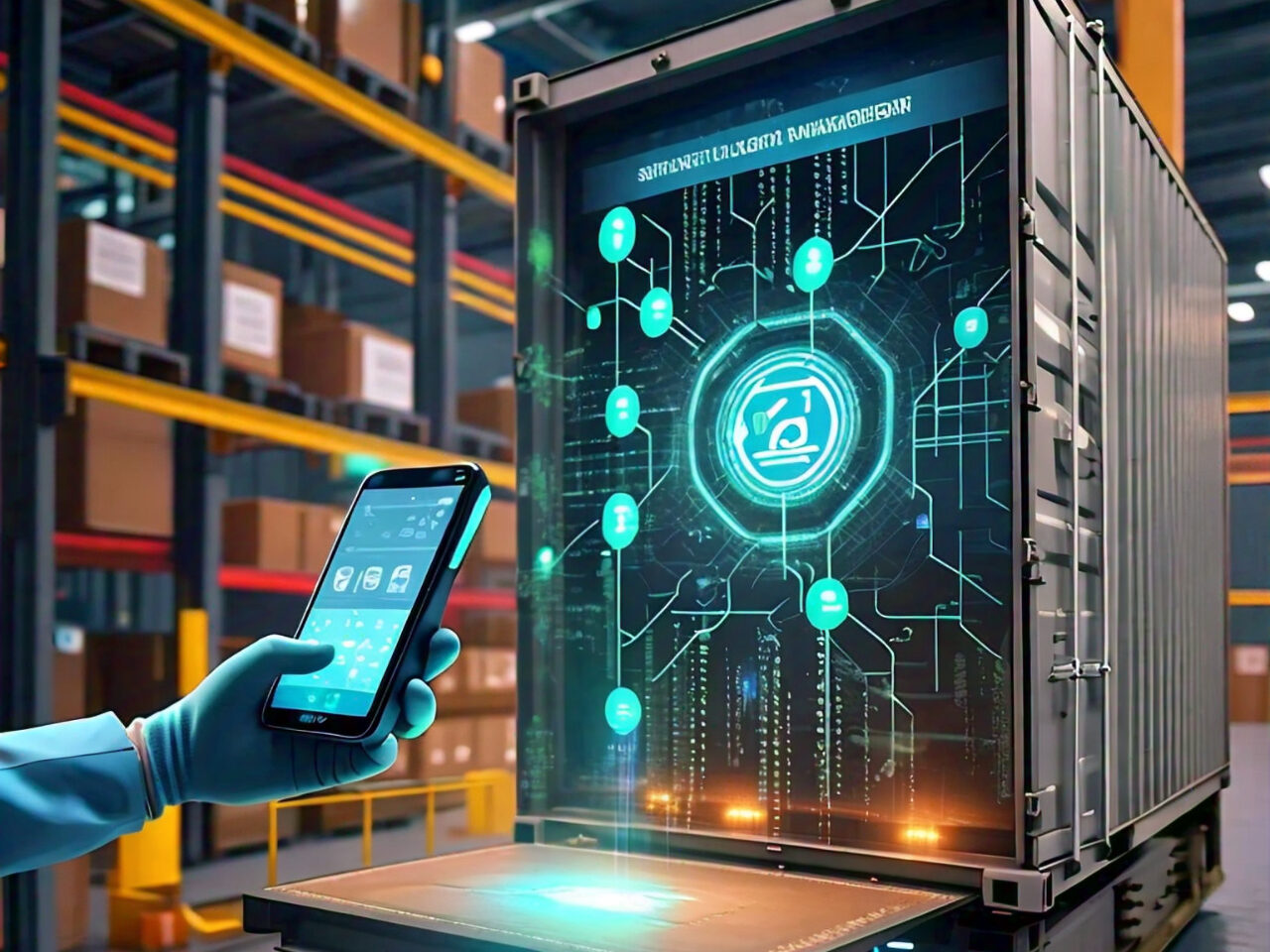
In today’s fast-paced global market, supply chain management plays a vital role in ensuring the smooth operation of businesses across various industries. However, traditional supply chain systems are often plagued by inefficiencies, lack of transparency, and vulnerability to counterfeiting. As professionals, entrepreneurs, and business owners, staying updated with the latest trends and technologies is crucial to maintaining a competitive edge.
One such game-changing technology is blockchain, which has been gaining significant attention in recent years for its potential to transform supply chain management. By providing a secure, transparent, and decentralized platform for data exchange, blockchain technology enables real-time tracking, monitoring, and verification of products throughout the supply chain.
From improving operational efficiency to enhancing customer satisfaction, the advantages of using blockchain in supply chain management are numerous. In this article, we will delve into the benefits, applications, and implementation strategies of blockchain technology, providing valuable insights for professionals, entrepreneurs, and business owners seeking to leverage this innovative technology to stay ahead in the competitive market.
Advantages of Using Blockchain in Supply Chain Management
1. Transparency and Traceability
Blockchain technology enables real-time tracking and monitoring of products throughout the supply chain, ensuring complete transparency and traceability. For instance, Walmart, the retail giant, uses blockchain to track its food products, enabling swift identification and recall of contaminated items.
2. Security and Authentication
Blockchain’s decentralized and immutable nature ensures that data cannot be tampered with, providing a secure platform for authentication and verification. Luxury fashion brand, Louis Vuitton, utilizes blockchain to authenticate its products, preventing counterfeiting and ensuring customer trust.
3. Efficiency and Speed
Blockchain streamlines processes, reduces paperwork, and automates transactions, leading to increased efficiency and speed. Maersk, the global logistics company, has implemented blockchain to reduce shipping times by up to 40% and lower costs by up to 20%.
4. Cost Reduction
By minimizing intermediaries, reducing paperwork, and increasing efficiency, blockchain technology can significantly lower costs. Unilever, the consumer goods company, has estimated that blockchain can reduce its supply chain costs by up to 10%.
5. Risk Management
Blockchain’s transparent and tamper-proof nature enables real-time monitoring, reducing the risk of errors, fraud, and non-compliance. Pharmaceutical company, Pfizer, uses blockchain to track its medicines, ensuring compliance with regulations and reducing the risk of counterfeit products.
These advantages of blockchain technology in supply chain management have the potential to transform industries, providing a competitive edge to early adopters.
Real-World Applications of Blockchain in Supply Chain Management
1. Food and Beverage Industry
- Nestle: Uses blockchain to track its coffee beans from farm to cup, ensuring fair trade practices and quality control.
- Dole: Implements blockchain to monitor its fruit shipments, reducing spoilage and ensuring freshness.
2. Pharmaceutical Industry
- Pfizer: Utilizes blockchain to track its medicines, preventing counterfeiting and ensuring compliance with regulations.
- Merck: Uses blockchain to monitor its vaccine distribution, ensuring secure and efficient delivery.
3. Automotive Industry
- Volkswagen: Implements blockchain to track its parts supply chain, ensuring authenticity and reducing counterfeiting.
- BMW: Uses blockchain to monitor its battery cell production, ensuring quality control and compliance.
4. Retail Industry
- Walmart: Uses blockchain to track its food products, enabling swift identification and recall of contaminated items.
- Louis Vuitton: Utilizes blockchain to authenticate its luxury goods, preventing counterfeiting and ensuring customer trust.
5. Logistics and Shipping
- Maersk: Implements blockchain to reduce shipping times by up to 40% and lower costs by up to 20%.
- FedEx: Uses blockchain to track its packages, ensuring real-time monitoring and efficient delivery.
These real-world examples demonstrate the potential of blockchain technology to transform supply chain management across various industries.
Implementing Blockchain in Supply Chain Management

1. Getting Started
- Assess Readiness: Evaluate existing infrastructure, processes, and team expertise.
- Identify Pain Points: Determine areas for improvement, such as inefficiencies or lack of transparency.
2. Choosing a Blockchain Platform
- Public vs. Private: Select a platform that aligns with business needs, such as Ethereum (public) or Hyperledger Fabric (private).
- Scalability and Interoperability: Consider platforms that support scalability and interoperability, such as Corda or Quorum.
3. Developing a Blockchain Strategy
- Align with Business Objectives: Ensure blockchain adoption supports overall business goals.
- Define a Roadmap: Establish a clear implementation timeline, milestones, and resources.
4. Building a Blockchain Network
- Partnerships and Collaborations: Foster partnerships with suppliers, logistics providers, and industry peers.
- Node and Network Configuration: Set up nodes, configure network settings, and ensure secure connections.
5. Pilot and Scale
- Pilot Project: Launch a small-scale pilot to test and refine blockchain implementation.
- Scale and Expand: Gradually scale up implementation, expanding to more nodes, partners, and processes.
Real-life examples:
- Maersk and IBM: Jointly developed a blockchain platform for global shipping, reducing costs and increasing efficiency.
- Walmart and Unilever: Collaborated on a blockchain pilot to track food products, ensuring quality control and compliance.
Overcoming Challenges and Limitations
1. Scalability and Interoperability
- Scalability Solutions: Implement sharding, off-chain transactions, or second-layer scaling solutions like Lightning Network.
- Interoperability Frameworks: Utilize frameworks like Cosmos or Polkadot to enable cross-chain communication.
2. Regulatory Compliance
- Data Privacy: Ensure compliance with regulations like GDPR and CCPA by implementing data encryption and access controls.
- Industry-Specific Regulations: Comply with industry-specific regulations, such as pharmaceutical tracking requirements.
3. Security and Vulnerabilities
- Node Security: Implement robust node security measures, including encryption, firewalls, and access controls.
- Smart Contract Auditing: Conduct regular smart contract audits to identify and address vulnerabilities.
4. Adoption and Integration
- Change Management: Develop a change management plan to ensure smooth adoption and integration.
- Education and Training: Provide education and training for stakeholders, including employees, suppliers, and customers.
Real-life examples:
- Maersk’s Blockchain Platform: Addressed scalability concerns by implementing a permissioned blockchain network.
- Walmart’s Food Tracking: Ensured regulatory compliance by implementing a blockchain system that meets FDA requirements.
Future of Blockchain in Supply Chain Management
1. Trends and Predictions
- Increased Adoption: Expect increased adoption of blockchain technology in supply chain management.
- Integration with Emerging Technologies: Anticipate integration with emerging technologies like IoT, AI, and 5G.
2. Career Development and Talent Acquisition
- New Job Roles: Prepare for new job roles and skill sets, such as blockchain developers, consultants, and analysts.
- Talent Acquisition: Attract and retain talent with expertise in blockchain technology and supply chain management.
3. Industry-Wide Collaboration
- Standards and Frameworks: Establish industry-wide standards and frameworks for blockchain adoption.
- Collaborative Networks: Foster collaborative networks and consortia to drive innovation and adoption.
4. Continuous Innovation
- Research and Development: Encourage continuous research and development to improve blockchain technology.
- Pilot Projects and Proof-of-Concepts: Support pilot projects and proof-of-concepts to test new applications.
Real-life examples:
- IBM’s Blockchain Consortium: Collaborates with industry leaders to develop blockchain standards and frameworks.
- Supply Chain Management Association’s Blockchain Initiative: Provides training and resources for professionals to develop blockchain skills.
Conclusion
The adoption of blockchain technology in supply chain management is transforming the industry in profound ways. From improving transparency and traceability to enhancing security and efficiency, the benefits of blockchain are clear.
As we look to the future, it’s essential to address the challenges and limitations of blockchain adoption, such as scalability, regulatory compliance, and talent acquisition.
Real-life examples of successful blockchain implementation in supply chain management include:
- Maersk’s Blockchain Platform: Reduced shipping times by up to 40% and costs by up to 20%.
- Walmart’s Food Tracking: Ensured quality control and compliance with FDA requirements.
- Unilever’s Supply Chain Transparency: Improved transparency and accountability in its supply chain.
To stay ahead in the competitive market, professionals, entrepreneurs, and business owners must:
- Stay Informed: Continuously update knowledge on blockchain technology and its applications.
- Develop New Skills: Acquire skills in blockchain development, consulting, and analysis.
- Collaborate: Foster industry-wide collaboration to drive innovation and adoption.
We can create a more efficient, transparent, and secure supply chain ecosystem by embracing blockchain technology.






